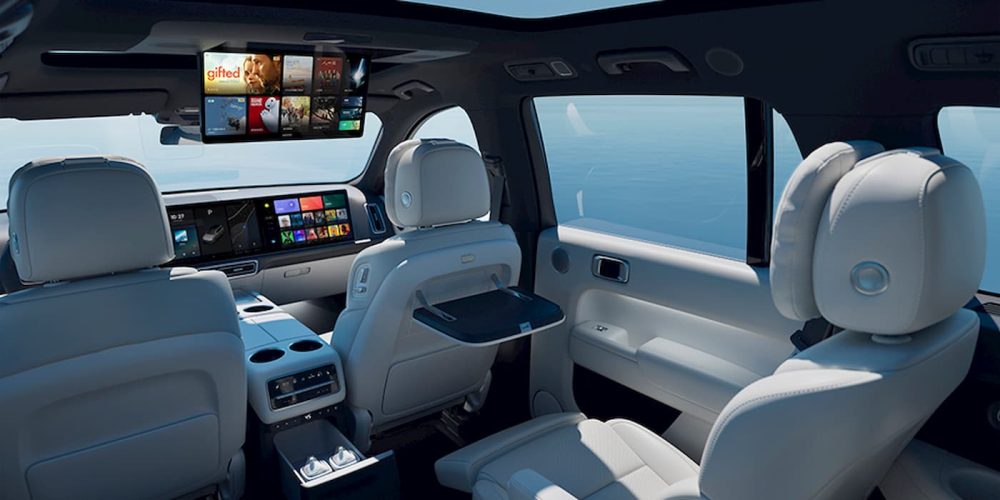Nvidia (NVDA) Q2 earnings fueled by automotive growth, announces new model plans with Nio, Li Auto
Chip-making giant Nvidia (NVDA) released its Q2 earnings report on Wednesday, falling short of Wall St expectations. However, a bright spot in the report was Nvidia’s automotive segment, fueled by rising demand for new energy vehicles.
Nvidia is best known for its state-of-the-art computer chips that power everything from gaming consoles to supercomputers and even crypto mining. In fact, Nvidia was one of the biggest winners during the pandemic as society moved digital.
The more online activity requires extra computing power. So Nvidia sales swelled 52% in 2020, reaching $16.68 billion, and then another 61% in 2021 as computer chips were in high demand.
In Nvidia’s fiscal Q2 2023 earnings, sales growth fell as economic conditions started to slow. Yet, Nvidia’s automotive business accelerated.
Nvidia’s Drive Orin is a system-on-a-chip (SoC) that acts as the central power in smart vehicles. The SoC is already powering 25 electric vehicle makers building smart cars like Nio and Li Auto.
Furthermore, Nvidia is working with top automakers to introduce its Drive Hyperion, an open autonomous vehicle (AV) platform. Mercedes-Benz will use Nvidia Drive AV to power its 2024 fleet, and in 2025, all newly released Jaguar/Land Rover vehicles will be using the platform.
The chip maker is working with hundreds of partners across the auto industry (automakers, trucking companies, suppliers, startups, etc.) to build and execute self-driving technology.
On Nvidia’s Q2 earnings call, Chief Financial Officer Collete Kress says the company is hitting an “inflection point” with its automotive revenue.
Li Auto L9 smart SUV powered by Nvidia Source: Li Auto
Nvidia hits ‘inflection point’ in its automotive business in Q2 earnings
Nvidia says its quarterly revenue grew by 3% from last year, reaching $6.7 billion, a much slower pace than the past several quarters.
The company missed its revenue goal of $8.1 billion primarily due to a 33% YOY drop in gaming revenue. Meanwhile, Nvidia’s automotive segment had its best quarter yet with revenue of $220 million, up 59% from Q1. In fact, auto was the company’s only segment that grew during the quarter (with the exception of data center, up 1%).
The company’s CFO says on the Q2 earnings call:
Strong growth was driven by auto AI solutions, which include AI cockpit and self-driving revenue, with particular strength in self-driving as new energy vehicle design wins ramp into volume. We believe Q2 was an inflection point for our automotive revenue as NVIDIA Orin has great momentum.
More importantly, during the quarter, Nvidia released plans to roll out new vehicles from top EV makers such as Nio, Li Auto, and Jidu.
That being said, Nvidia says it expects the automotive growth to continue with its $11 billion auto design win pipeline.
Subscribe to Electrek on YouTube for exclusive videos and subscribe to the podcast.

Chip-making giant Nvidia (NVDA) released its Q2 earnings report on Wednesday, falling short of Wall St expectations. However, a bright spot in the report was Nvidia’s automotive segment, fueled by rising demand for new energy vehicles.
Nvidia is best known for its state-of-the-art computer chips that power everything from gaming consoles to supercomputers and even crypto mining. In fact, Nvidia was one of the biggest winners during the pandemic as society moved digital.
The more online activity requires extra computing power. So Nvidia sales swelled 52% in 2020, reaching $16.68 billion, and then another 61% in 2021 as computer chips were in high demand.
In Nvidia’s fiscal Q2 2023 earnings, sales growth fell as economic conditions started to slow. Yet, Nvidia’s automotive business accelerated.
Nvidia’s Drive Orin is a system-on-a-chip (SoC) that acts as the central power in smart vehicles. The SoC is already powering 25 electric vehicle makers building smart cars like Nio and Li Auto.
Furthermore, Nvidia is working with top automakers to introduce its Drive Hyperion, an open autonomous vehicle (AV) platform. Mercedes-Benz will use Nvidia Drive AV to power its 2024 fleet, and in 2025, all newly released Jaguar/Land Rover vehicles will be using the platform.
The chip maker is working with hundreds of partners across the auto industry (automakers, trucking companies, suppliers, startups, etc.) to build and execute self-driving technology.
On Nvidia’s Q2 earnings call, Chief Financial Officer Collete Kress says the company is hitting an “inflection point” with its automotive revenue.
Nvidia hits ‘inflection point’ in its automotive business in Q2 earnings
Nvidia says its quarterly revenue grew by 3% from last year, reaching $6.7 billion, a much slower pace than the past several quarters.
The company missed its revenue goal of $8.1 billion primarily due to a 33% YOY drop in gaming revenue. Meanwhile, Nvidia’s automotive segment had its best quarter yet with revenue of $220 million, up 59% from Q1. In fact, auto was the company’s only segment that grew during the quarter (with the exception of data center, up 1%).
The company’s CFO says on the Q2 earnings call:
Strong growth was driven by auto AI solutions, which include AI cockpit and self-driving revenue, with particular strength in self-driving as new energy vehicle design wins ramp into volume. We believe Q2 was an inflection point for our automotive revenue as NVIDIA Orin has great momentum.
More importantly, during the quarter, Nvidia released plans to roll out new vehicles from top EV makers such as Nio, Li Auto, and Jidu.
That being said, Nvidia says it expects the automotive growth to continue with its $11 billion auto design win pipeline.
Subscribe to Electrek on YouTube for exclusive videos and subscribe to the podcast.

